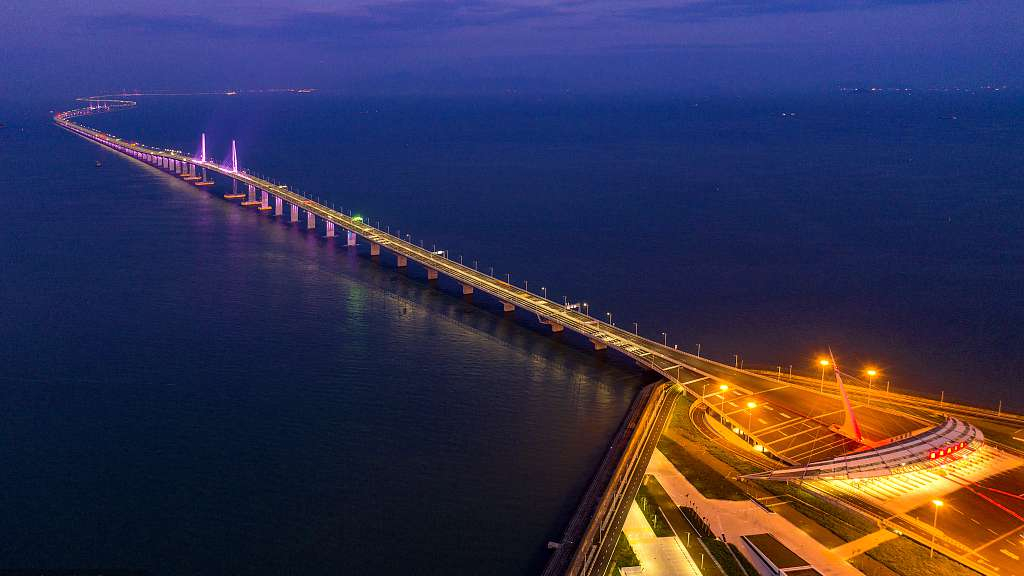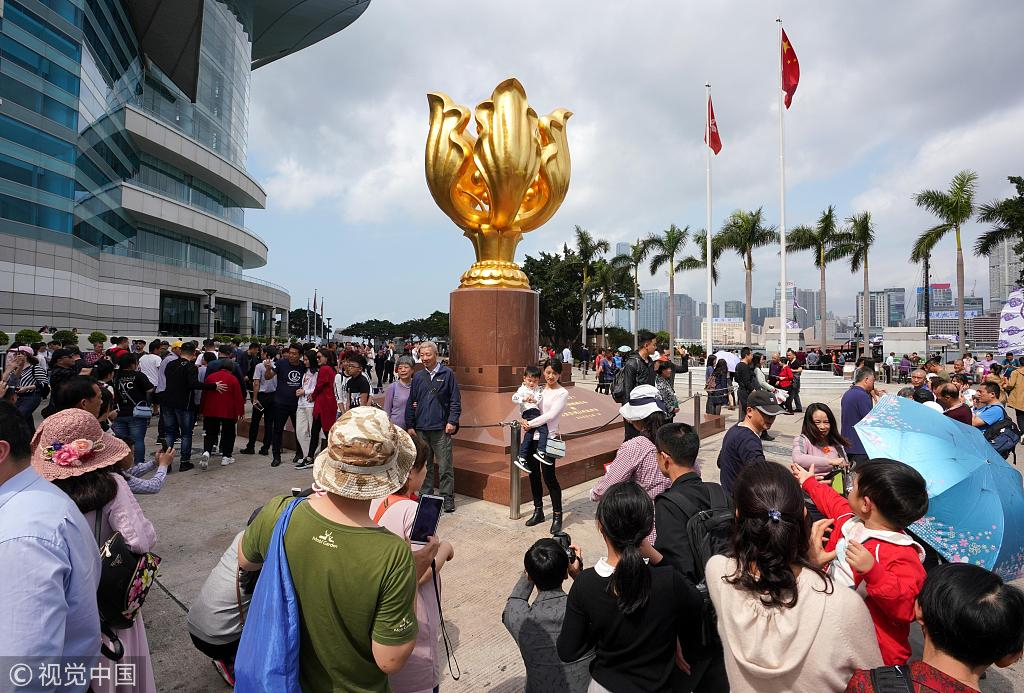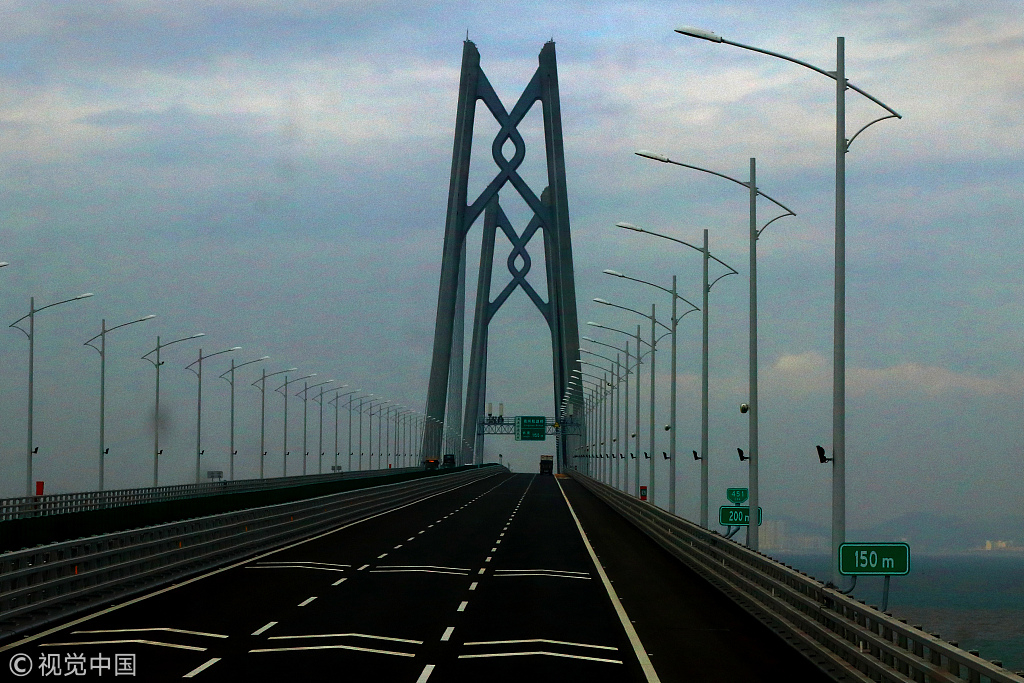
Opinion
20:43, 20-Feb-2019
Blueprint of Greater Bay Area aims to develop a cluster of world class smart cities
Liu Chunsheng

Editor's note: Liu Chunsheng is an associate professor of Central University of Finance and Economics in China as well as deputy dean of Blue Source Capital Research Institute. The article reflects the author's opinions, and not necessarily the views of CGTN.
On Feb.18, 2019, the Central Committee of the Communist Party of China and the State Council released the development plan for Guangdong-Hongkong-Macao Greater Bay Area, aiming to turn it into a word class bay area, city cluster and role model for China's further opening up and a new driver for regional and national economic growth.
The construction of Greater Bay Area is based on the economic integration of Guangdong, Hongkong and Macao and will improve a more effective regional distribution and mutual development in the area. There are four center cities, Hong Kong, Macau, Guangzhou and Shenzhen in the area.

A scenery of Macau. /VCG Photo.
A scenery of Macau. /VCG Photo.
The development plan proposes to strengthen infrastructure construction, unblock the external communication channels, enhance internal connectivity, and promote the formation of a network with scientific layouts, complete functions and efficient operations. Particularly, it calls for building a modern integrated transportation system, optimizing and upgrading information infrastructure and strengthening an energy security system.
The development plan will also promote the expansion of Internet broadband between Guangdong, Hong Kong and Macao, strengthen the cooperation of smart cities in the area, establish smart cities cluster, jointly push forward the interconnection of electronic payment systems in the Greater Bay Area, and optimize the energy structure and layout.
It is well known that the construction of smart cities and clusters of smart cities is focused on innovation and technological capabilities. The bay areas in the world are also gathering places for technological innovation, and all kinds of science and technology resources are highly concentrated, for example Apple, Google, Facebook, etc. all these global technology giants are gathered in the San Francisco Bay Area and 60 of Fortune 500 companies are headquartered in the Tokyo Bay Area.

On February 11, 2019, the Immigration Department of Hong Kong announced the entry and exit data during the Chinese New Year. In the New Year holiday, the number of mainland visitors to Hong Kong reached 1.4 million, a year-on-year increase of 32%. /VCG Photo.
On February 11, 2019, the Immigration Department of Hong Kong announced the entry and exit data during the Chinese New Year. In the New Year holiday, the number of mainland visitors to Hong Kong reached 1.4 million, a year-on-year increase of 32%. /VCG Photo.
In the past 20 years, Guangdong, Hong Kong and Macau Bay Area have also bred a number of world class technology giants, such as Tencent, Huawei, ZTE, Dajiang and Gree. The Pearl River Delta in the Bay Area is positioned as a technology industry innovation center. Shenzhen has obtained more international patents than France or the United Kingdom.
The Guangdong-Hong Kong-Macao Greater Bay Area has developed a fairly complete high-tech industrial chain, which is expected to become one of the most influential technological innovation centers in the world. In response to the challenges brought about by urbanization, over the past decade, more and more countries have been continually investing in building smart cities. The concept of smart networks and collaborative innovation is also the aim of the development of the Greater Bay Area.

A view of the Hong Kong-Zhuhai-Macao Bridge. /VCG Photo.
A view of the Hong Kong-Zhuhai-Macao Bridge. /VCG Photo.
The construction of an innovative economy and world class smart cities cluster in the Greater Bay Area will significantly improve the quality and efficiency of the cities and industries in Guangdong, Hong Kong and Macao. There will be plenty of opportunities in the construction of the Greater Bay Area, for example it is expected to attract massive investment in infrastructure, high-end manufacturing industry, modern service sector and new economy.
However, the challenges exist during any economic integration of regions with different systems. The key is to respect the law of market economy. The thorough investigation, comprehensive planning and policy coordination will be necessary to realize its success. With the support of central government and efforts from three participating parties, the development plan for Guangdong-Hongkong-Macao Greater Bay Area can be achieved.
If you want to contribute and have specific expertise, contact us opinions@cgtn.com.)

SITEMAP
Copyright © 2018 CGTN. Beijing ICP prepared NO.16065310-3
Copyright © 2018 CGTN. Beijing ICP prepared NO.16065310-3